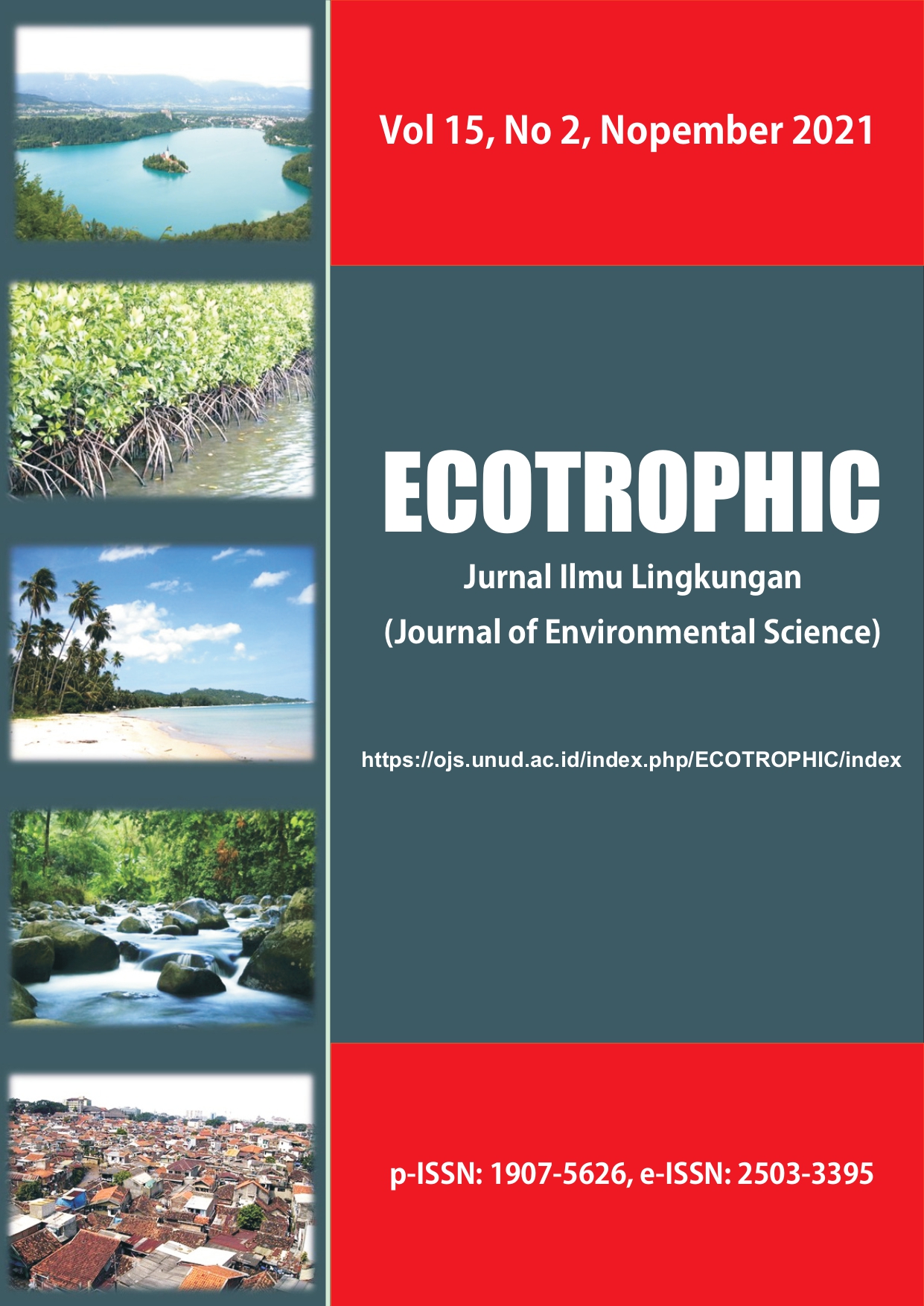ESTIMASI KANDUNGAN KARBON ATAS PERMUKAAN TANAH PADA HUTAN ALAM DAN HUTAN REHABILITASI MANGROVE TAMAN HUTAN RAYA NGURAH RAI BALI
Abstract
Mangroves are ecosystems that play an important role in absorbing and storing carbon from the air, one of which is in the form of mangrove vegetation biomass. As the largest mangrove area in Bali which consists of natural and rehabilitation vegetation, Taman Hutan Raya Ngurah Rai has a large potential for high carbon content. To determine the carbon potential of mangroves in natural and rehabilitation forests, a research was conducted using the purposive sampling method based on the canopy density level which was divided into 5 categories, namely very rare, rare, moderate, dense, very dense. Based on the results of measurements and calculations, the total carbon content of Ngurah Rai Grand Forest Park is 86.521,74 tons C, consisting of natural forest content 66.857,53 tons C and rehabilitation forest 19.664,21 tons C. Above ground carbon per hectare in natural forest was not significantly different from the above ground carbon per hectare in rehabilitation forest, these results indicate that the carbon content per hectare of rehabilitation forest over 20 years old is almost close to the carbon content per hectare in natural forest. The diameter of trees and vegetation types did not significantly affect the carbon content of mangroves, these results indicate that the increase in carbon stocks in each type of vegetation in natural and rehabilitation forests is in line with diameter growth.
Keywords: Biomass; Density; Diameter; Canopy.
Downloads

This work is licensed under a Creative Commons Attribution 4.0 International License.


